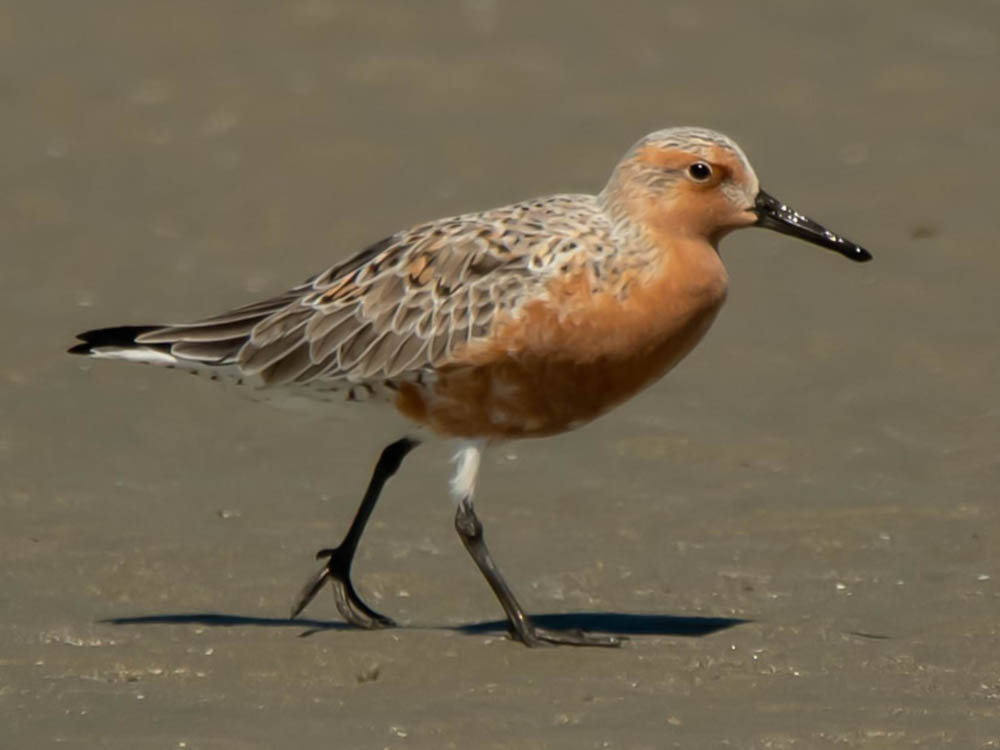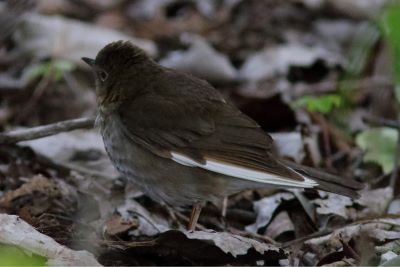


After reading Moonbird, Jackie Brooks wondered if Red Knots are unique in the way their bodies are transformed for migrations. She found this fascinating article from Audubon: “Five Incredible Ways Birds Change Their Bodies for Spring and Fall Migration“. The answer is other birds also transform their bodies.
“… birds radically change their bodies and their metabolism for the main event. In just weeks or months, they undergo physical transformation unmatched by human gains from years of training. To fly vast distances between breeding and wintering grounds, birds can shrink their internal organs, rapidly gain and burn through fat stores, barely sleep, and more.
These are incredible abilities, but they come with tradeoffs. The energy required to fly hundreds or thousands of miles in a short span leaves birds with little room for error during migration, and vulnerable to natural and human-caused threats. In North America alone, an estimated 2.6 billion birds disappear between fall and spring migration every year. Researchers pin many of these losses on migration, when birds must survive storms and cold snaps, navigate skyscrapers and other buildings, avoid predators, and successfully forage for food or else fail to complete their journeys.“
The article gives more detail of these five ways birds transform for migration:
- Double Their Body Weight – birds undergo hyperphagia: They eat excessive amounts of food for two weeks or more to store fat before migration. During this time, birds gorge on high-energy berries and fruits loaded with carbohydrates and lipids, which are stored as fat.
- Transform Internal Organs – All that fat added on to a bird’s small frame can’t just sit anywhere—it must be distributed properly. To make it all fit, many birds are able to shrink and grow their internal organs.
- Greatly Reduce Their Sleep Time – During migration, a neurological shift instigated by the changing season forces birds to adapt to nocturnal habits and sleep less. How do birds rest while in mid-air? Very quickly. Swainson’s Thrushes, which undertake 3,000-mile migrations from Central and South America to northern Canada and Alaska, enter a sleep-like state for about nine seconds at a time. They keep one half of their brain awake to avoid predators or mid-air collisions while the other half rests.
- Consume Their Own Muscles – When endurance athletes exhaust their carbohydrate and fat supplies, they face dehydration and starvation. For humans, those needs can put an end to any athletic performance. But birds have a last-ditch backup: They can burn their muscles for energy, a trick that some birds use to their advantage.
- Revert to Their Previous Form – Once birds reach their destination, they need to regain their organ function and shape, and refuel now-emaciated fat stores.
Register now to learn more about the importance of South Carolina to migratory Red Knots on February 22, 2024 when Felicia Sanders presents South Carolina’s Critical Role in the Survival of Arctic Nesting Shorebirds with a focus on Red Knots.
Also, it is not too late to join or learn more about the Seabrook Island Shorebird Steward Program! We invite you to visit the Seabrook Island Birders webpage (www.seabrookislandbirders.org) and visit the Shorebird Stewards tab. Sign up with your spouse or a friend, or meet new friends during the upcoming training sessions. Send an email to SIBStewards@gmail.com to join the group or ask for more information. It is a rewarding experience that you will surely come to cherish.


